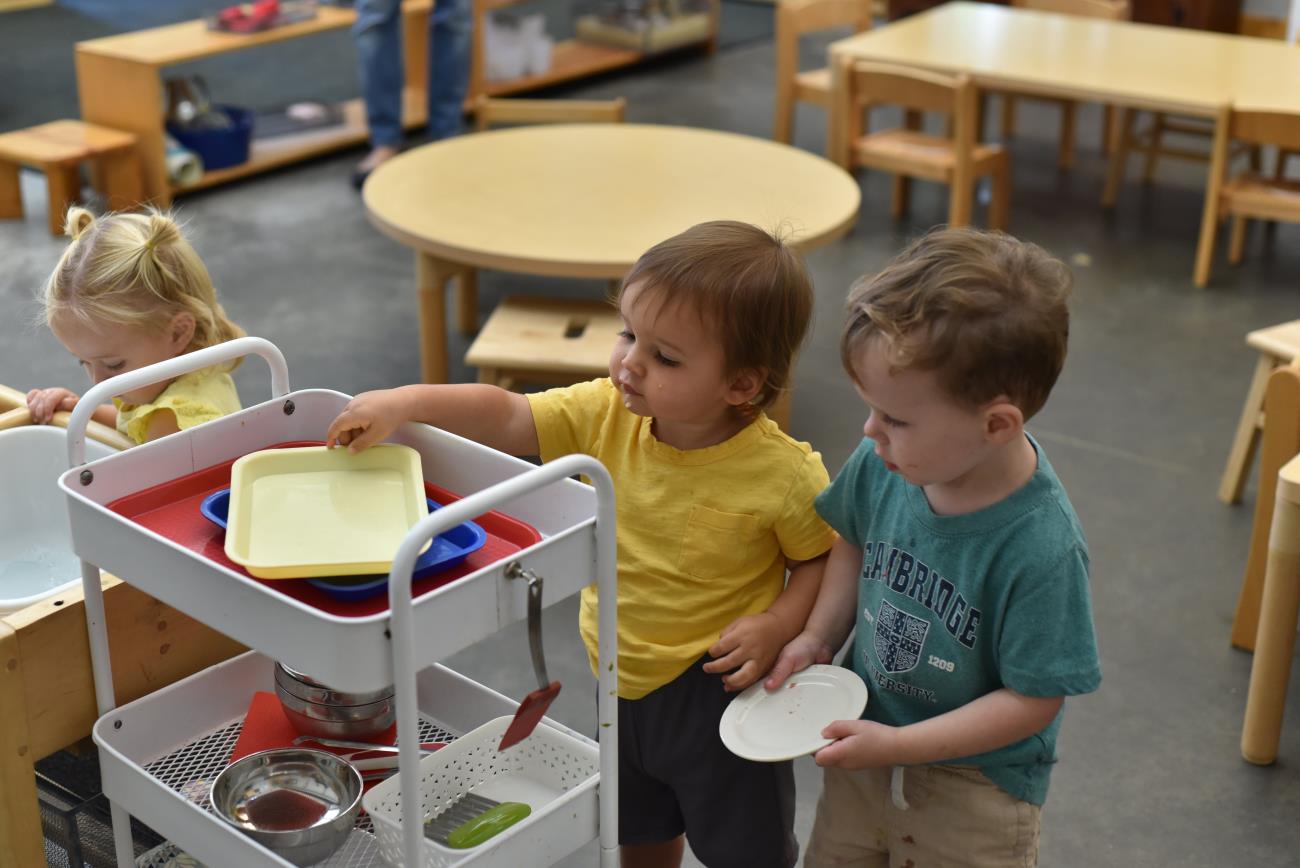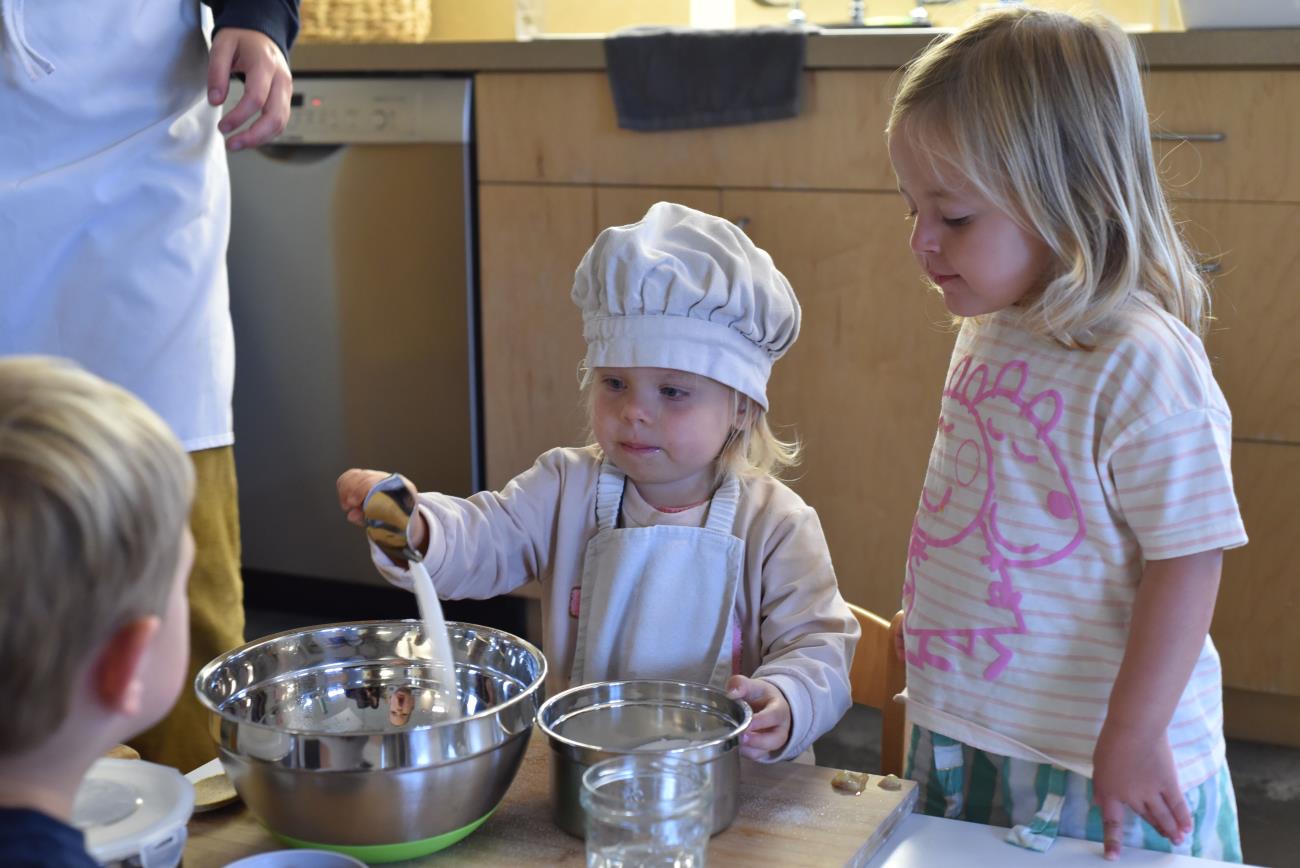If you look to social media for ideas about Montessori for very young children, you will likely see lots of stuff. There are several materials in our classrooms that would be excellent in a home as well, but I would argue the best way to do Montessori at home is to include your child in as many aspects of daily life as you can. These activities are referred to as the practical life curriculum in our classrooms.
Practical life encompasses all of the activities and actions that we do every day to take care of ourselves, others, and the space that we live in. Some of these activities are related to our basic survival, such as preparing and eating food, and many of them are what we would think of as chores to be done to keep our households running smoothly.
We talk a lot about practical life in the Montessori environment because those exercises encourage so many aspects of development in the young child. Practical life fosters growth in fine motor, gross motor, language, and social-emotional literacy. It also highlights one of the most important skills for a young child to develop: independence.
The most important aspect of doing practical life activities with babies and young toddlers is to have the house prepared for them. This does not mean they need to have a beautiful IKEA kitchen like you may have seen on Instagram. Having a basket of towels that they can access and a place for the wet/dirty ones to go is enough. Smaller utensils are great, but it is more important to allow them to be involved when you feel comfortable doing so than wait until you have all the perfect items.
We do these practical life activities every day in our own homes without thinking about it. Children start their lives with these activities being done to or around them. The child absorbs who does those activities and how that person does them. As children get closer to pulling to stand and walking, they become intensely interested in participating in these activities.
Even the youngest babies watch and absorb everything around them. We can include babies who aren’t able to sit up yet by doing appropriate activities next to them and narrating the process. They are frequently happy to observe us as we move about cleaning our homes and are that much more likely to participate where they can as they are physically able.
Here is a non-exhaustive chart of activities that you might be able to incorporate into your home routines with your children:
| 6-12 months | 12-24 months | 24-36 months | |
| Cleaning the table | -Wiping spills while seated in their high chair | -Retrieving cloth and placing soiled cloth in the laundry basket | -Clearing plates to the sink |
| Laundry | -Load individual items into a front-loading washing machine |
-Loading the washing machine -Flipping laundry to the dryer
|
-Sorting -Folding -Putting their clothes away -Hanging clothes on hangers
|
| Cooking, baking, and meal times |
-Pouring water into cup -Transferring items from cutting board to bowl -Self-feeding -Washing vegetables in a bowl of water
|
-Slicing -Spreading -Adding ingredients -Stirring -Peeling oranges -Shucking corn -Sprinkling (seeds, herbs, etc.) -Using a fork -Setting the table
|
-More advanced knife skills -Scooping -Measuring -Filling muffin tins -Grinding pepper -Peeling vegetables
|
| Care of Home |
-Unloading dishwasher -Water outdoor plants
|
-Loading dishwasher -Watering plants -Dusting shelves -Sweeping -Vacuuming -Mopping -Arranged flowers in vases -Restoring order with help
|
-Sweeping into a dustpan -Cleaning windows and mirrors with vinegar spray -Dusting plant leaves -Cut flower stems -Repotting plants -Restoring order independently
|
| Care of Self |
-Participating in dressing and undressing -Giving two choices for clothing options for the day
|
-Brushing teeth -Brushing hair -Washing hands -Pulling zipper up -Closing velcro on shoes -Independent dressing and undressing -Wiping their nose
|
-Cleaning shoes -Buttoning clothes -Threading zippers -Independently changing shoes
|

